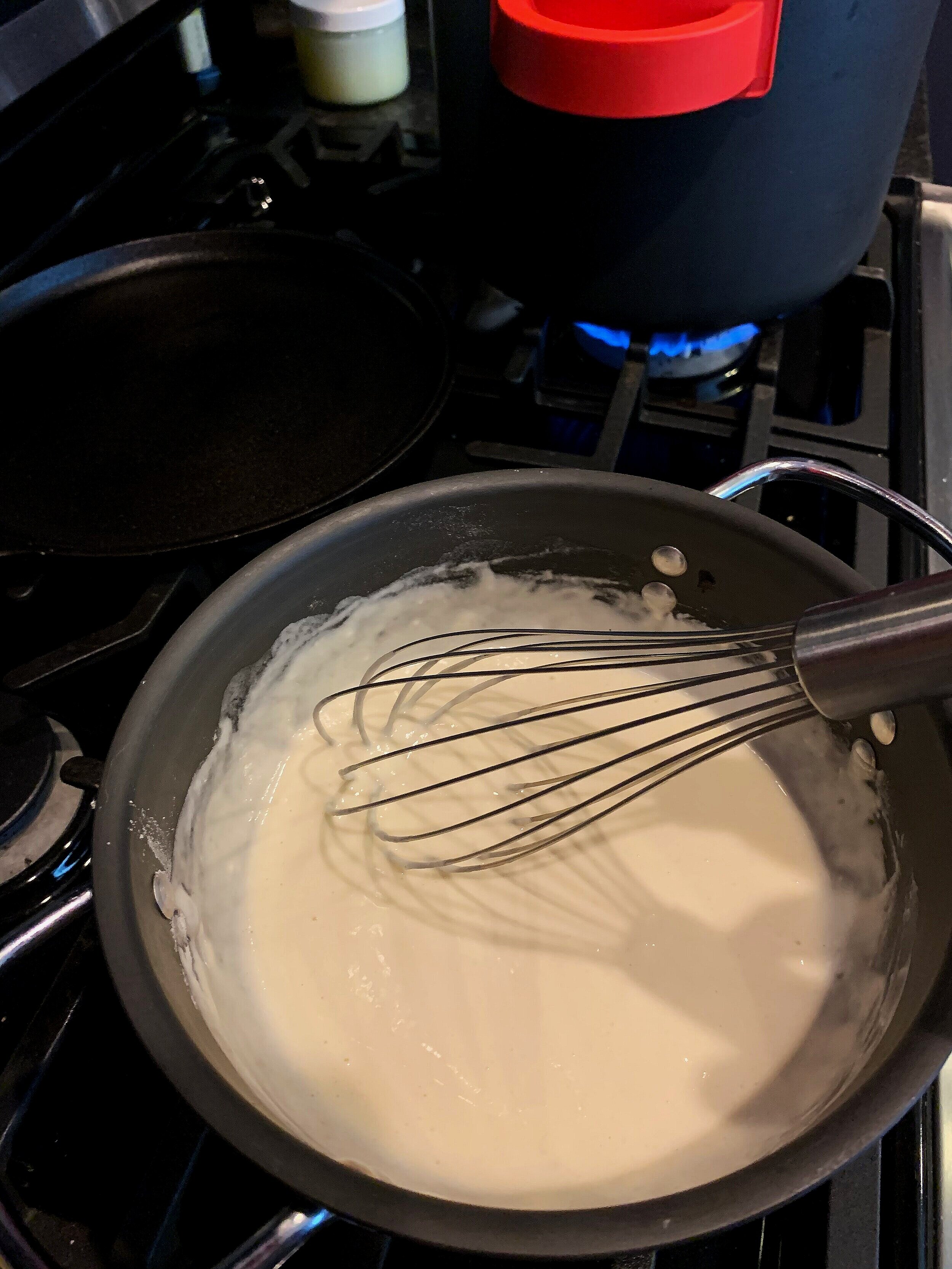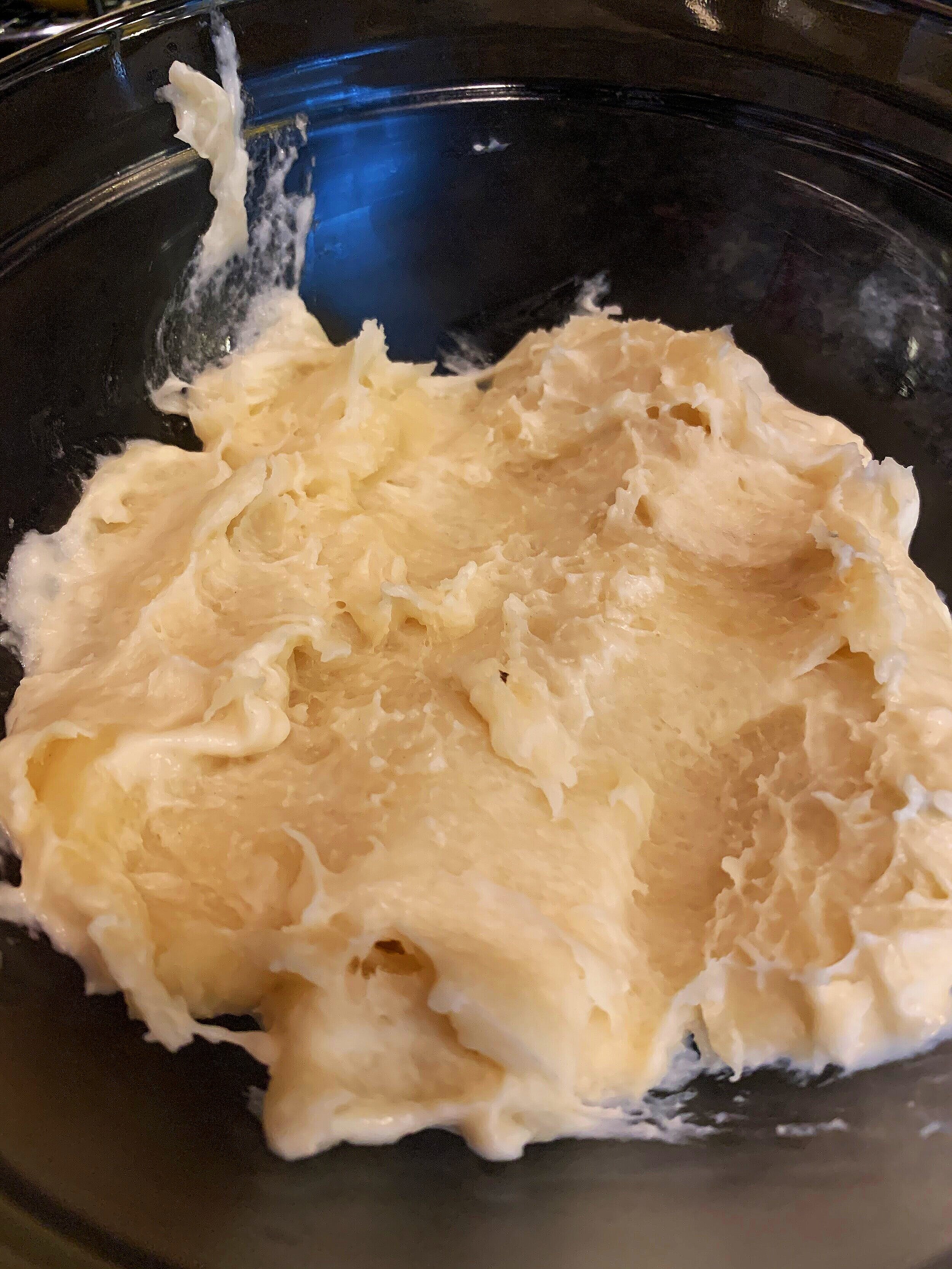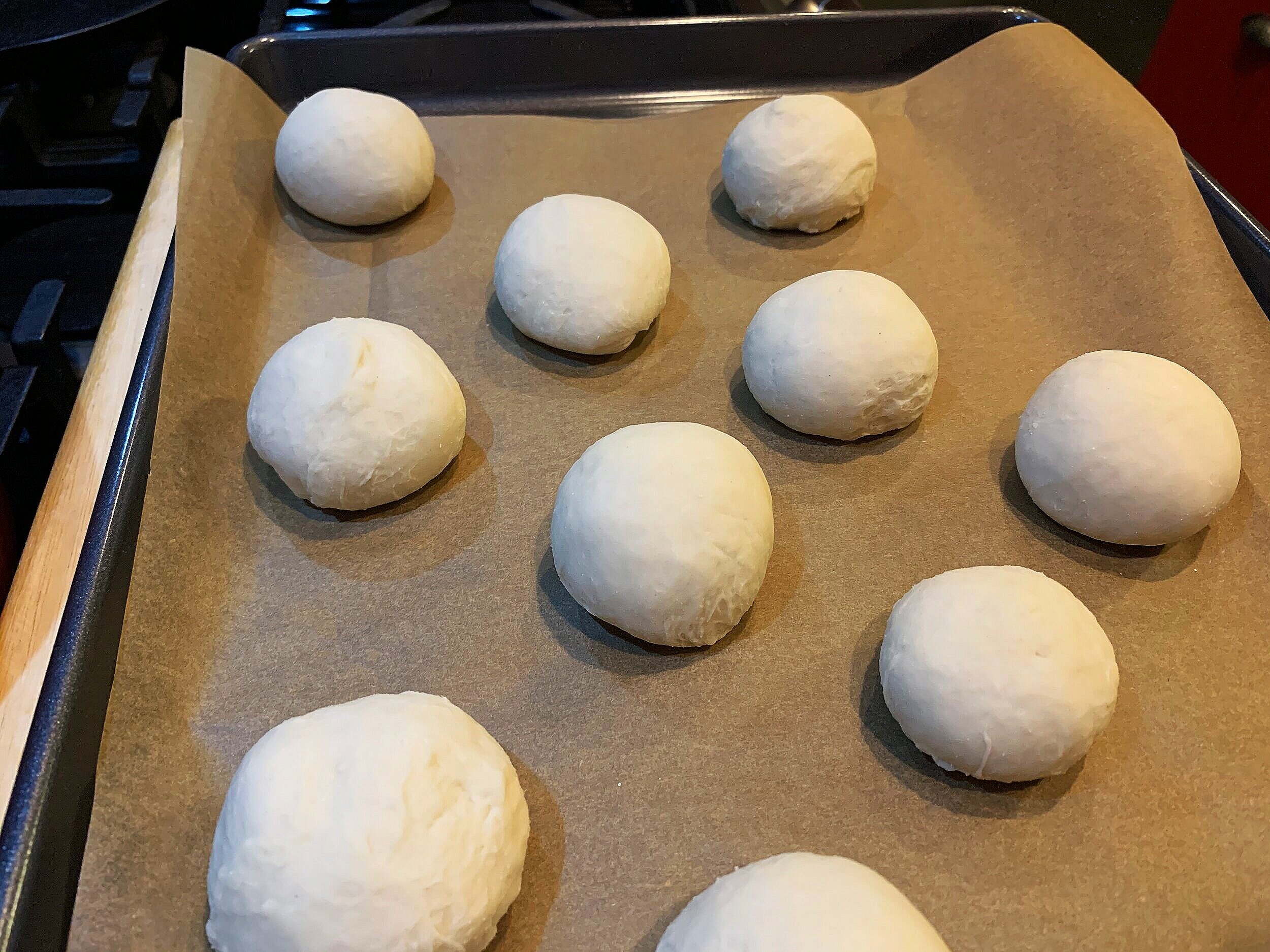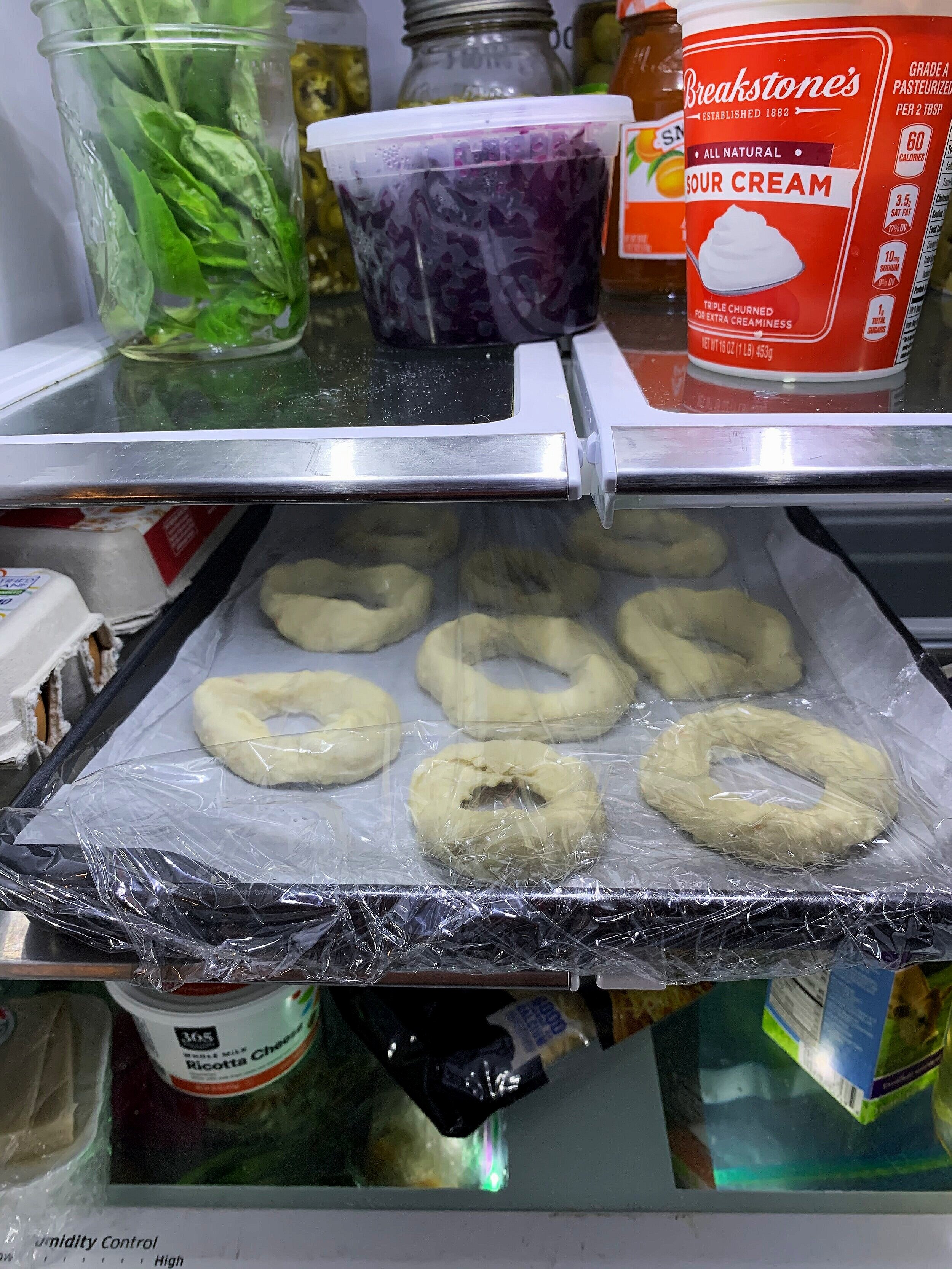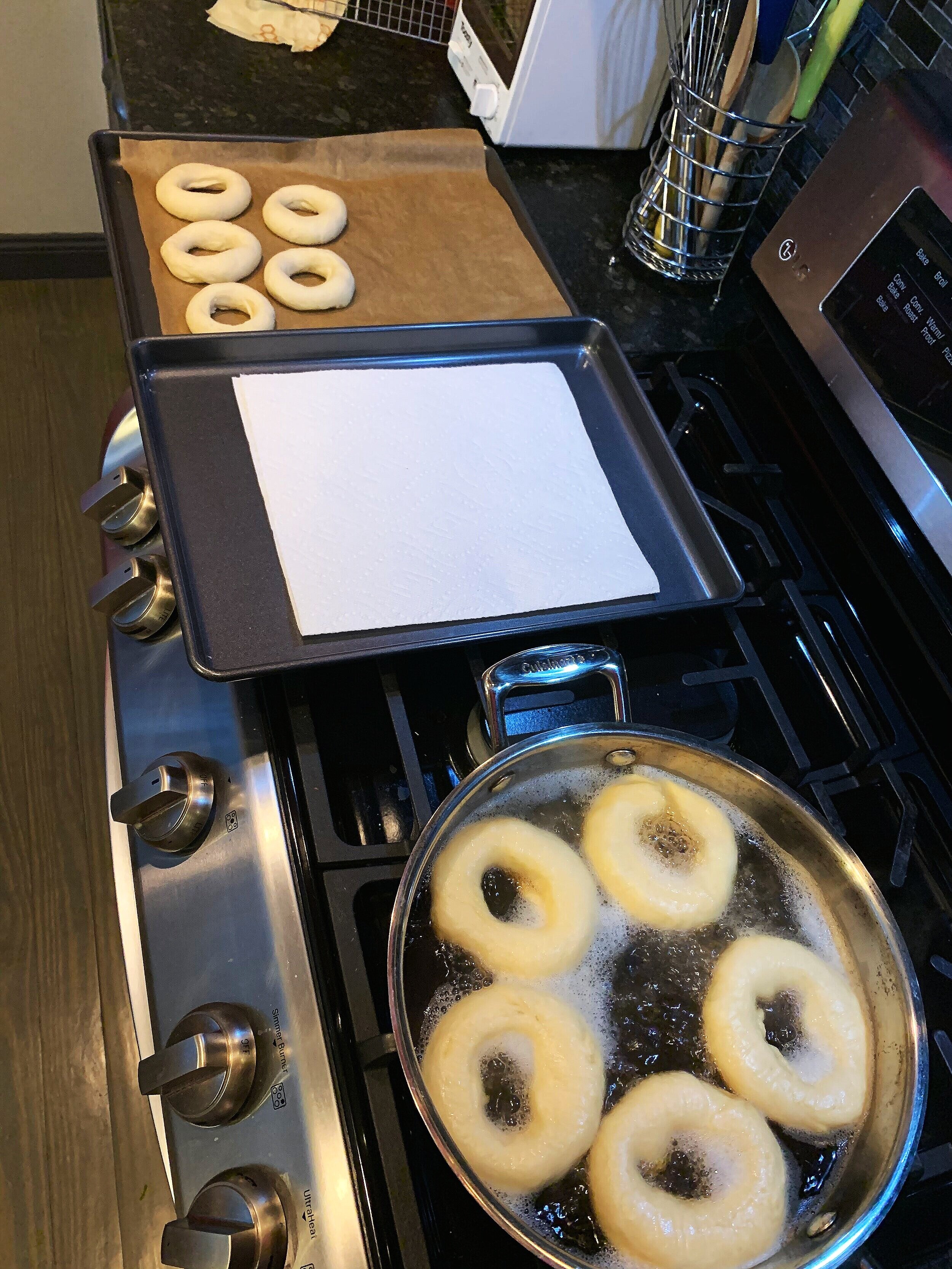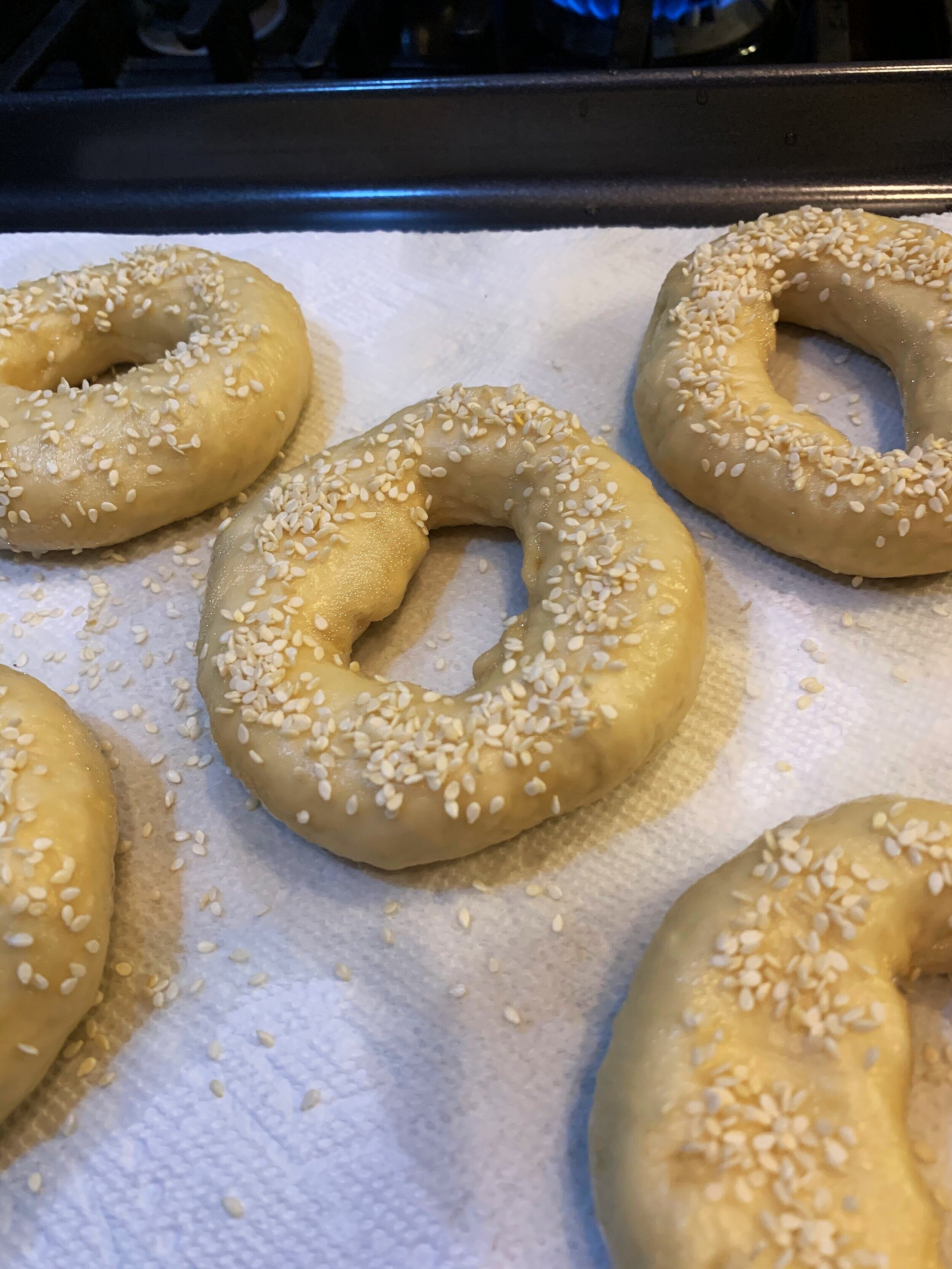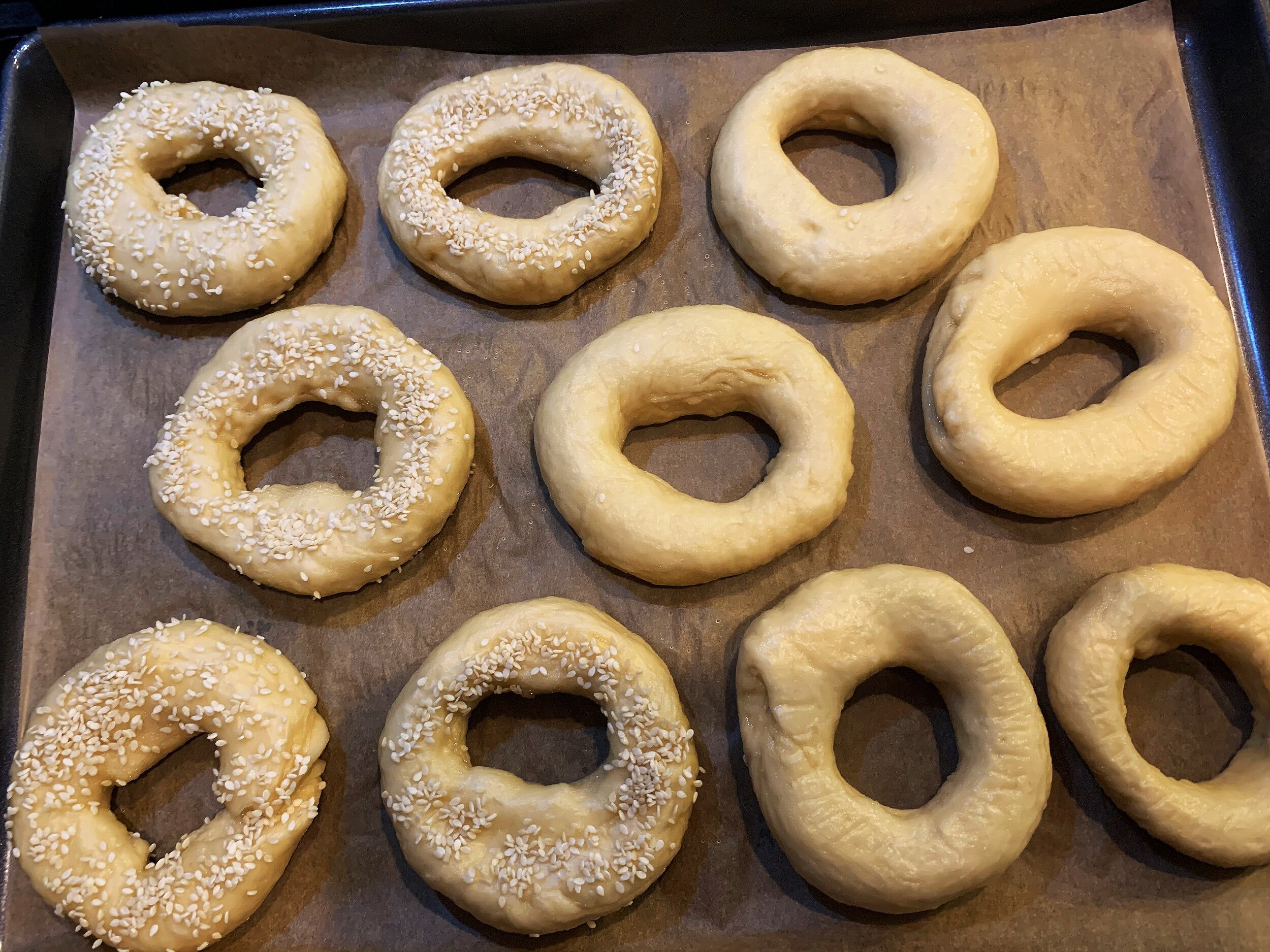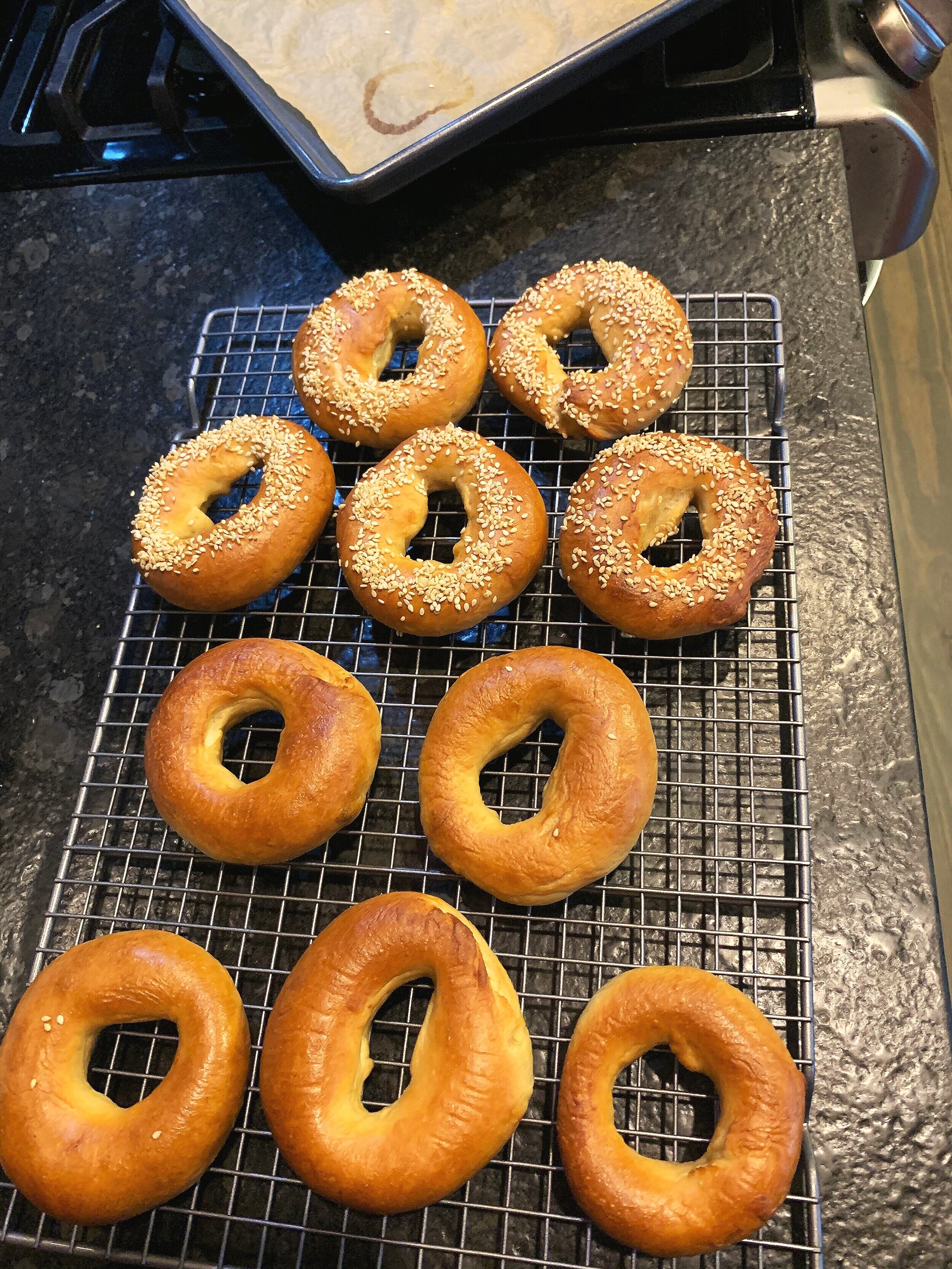Bagel Making at Home
Photos by Annie B. Copps
We’ve all needed a bit of carb-loading during Covid-quarantine and Annie Copps is here for us. If you missed her Sourdough Crackers recipe to help you use up all that starter discard, find that here>>
Even before these strange “shelter in place” days began, I was in a pretty serious baking phase. Like many, I found comfort from the cold in my kitchen. I was trying to get my head around bagel making but I gave up. I am a fairly skilled baker, but bagels with their pre-bake boiling technique sounded like a hassle and I hadn’t really had a homemade bagel I deemed worthy of the vexing effort. With the extra time on my hands (I do enjoy a challenge), why not go back to the bagel-making drawing board?
I confess. There were many failures. I read and read, watched and watched, and I tried loads of different approaches. Most rendered a tough end product. Or a bagel that was good, but only for about 6 hours and then more suitable as a doorstop than for a schmear of cream cheese. All that reading and watching of YouTube videos brought me to a hybrid recipe from the work of Stella Parks (BraveTart/Serious Eats), Dan Leader (Bread Alone), the folks at King Arthur and America’s Test Kitchen. These people are pros and in the end this is not a recipe for beginners, but it is reasonably doable.
I wanted a New York-style bagel, strong on the outside with a bit of a shiny skin, but chewy (not doughy) inside. This recipe will get you there with help from the bakers above and a tip from Japan.
It turns out for a home-baked, New York style bagel the “truc” came from the kitchens of Japan. Turns out there is trick or rather a technique called TangZhong, or Yudane. A portion of flour and water is pre-cooked to a thick paste and later added to the dough. Through a process of pre-gelatinizing the starches in the flour, the pre-cooked “mush” gives the final cooked bagel (or bread) a longer, more stable shelf life without adding unpronounceable chemicals. The technique also makes the dough more pliable to work with and offers better crumb structure.
Bagels also get boiled just before they are baked. This also makes or breaks that outer crust. How long they are boiled affects the final product and that took some R&D as well—some were boiled too long and were too tough, others not long enough and the end result was more a roll than a bagel. Two minutes per side was the magic amount of time in my kitchen.
This takes about 14 hours start to finish, but it is not a lot of hands-on time; most of the time is letting the dough do its thing in the fridge.
You can make the TangZhong two or three days beforehand. The dough gets made the night before and the boil-and-bake happens the next morning.
I start things at around 6:30–7:00pm the night before, so I could get up at a reasonable 7:00–7:30am to get the show started. A digital kitchen scale will help you immensely.
HOMEMADE BAGELS
Makes 10 bagels
For the TangZhong (this is pretty much straight from Stella Park):
6 ounces cold water ( ¾ cup or 170 grams)
3 ½ ounces bread flour (about ¾ cup or 100 grams)
In a 10-inch skillet, over medium heat, whisk together the water and flour until no lumps remain and it begins to thicken, about 2 minutes. I found the consistency of thick paste was best; be careful not to overcook. Scrape onto a plate, spread into a 1-inch layer, cover with plastic wrap and let cool in the refrigerator until to about 75°F (23°C); about 30 minutes. You can keep this in the fridge for 2 or 3 days. Let it come to room temperature before using.
For the Bagel Dough:
12½ ounces bread flour (about 2 2/3 cups or 355 grams)
½ ounce sugar (1 tablespoon or 15 grams)
2½ teaspoons kosher salt (9 grams); for table salt, use half as much by volume but the same weight
1 teaspoon instant dry yeast (4 grams)
3½ ounces water (½ cup minus 1 tablespoon or 100 grams)
barley malt syrup, molasses or honey (for adding to the bagel boiling water)
In the bowl of a food processor, pulse together the flour, sugar, salt and yeast. Once combined, add the room temperature TangZhong and the water. Process until the dough pulls away from the sides of the bowl into a clump in the center. Pull off a 1-inch blob of dough and try stretching it—it should stretch out about 3 inches without tearing. If it tears, process about 30 seconds more.
Turn the dough onto a work surface and let rest 30 minutes. Divide the dough into 10 equal portions. Roll the portions into balls and shape cupping one hand over the top of the balls and with gentle pressure on the top of the ball, roll the ball in quick, circular motions to form a tight ball, with only a tiny seam along the bottom. If the seam is large or irregular, continue rounding until the bottom is nearly smooth. Place the ball on a parchment lined rimmed baking sheet. Repeat with remaining dough balls. Cover with a towel and let rest 30 minutes.
Shape the bagels:
Poke a hole through the center of a dough ball to create a “donut” shape. Place fingers in the hole and rotate the dough with your hands, gently stretching and rotating to create a hole about 2 inches in diameter. Place back on the baking sheet. Repeat with remaining dough balls. Cover with plastic wrap and refrigerate 12 to 14 hours.
Preheat the oven to 425°F.
Remove the dough from the refrigerator.
In a large soup pot, bring 3 inches of water to a boil. For every quart of water, add 1 teaspoon of barley malt syrup, molasses or honey (this helps with the browning). Lower heat to a gentle boil.
Boil the bagels:
Line a second rimmed baking sheet with a few paper towels. Working two or three at a time, boil the bagels about 2 minutes per side. Remove to the paper towel for +/- 20 seconds, then transfer back to the parchment-lined baking sheet (if left on the paper towels too long, the bagels will stick; if this happens, quickly dip the bagel back into the hot water and the wet paper towel will peel right off). Repeat with remaining dough. Bake now or sprinkle with poppy seeds, sesame seeds, coarse salt—whatever you like.
Bake the bagels until blistered and deep brown all over; about 25 minutes. Cool at least 15 minutes. To serve, split horizontally with a serrated knife. Uncut, bagels can be stored up to 48 hours in a paper bag (or loosely wrapped in parchment) then sliced and briefly toasted to serve. They freeze very well.


